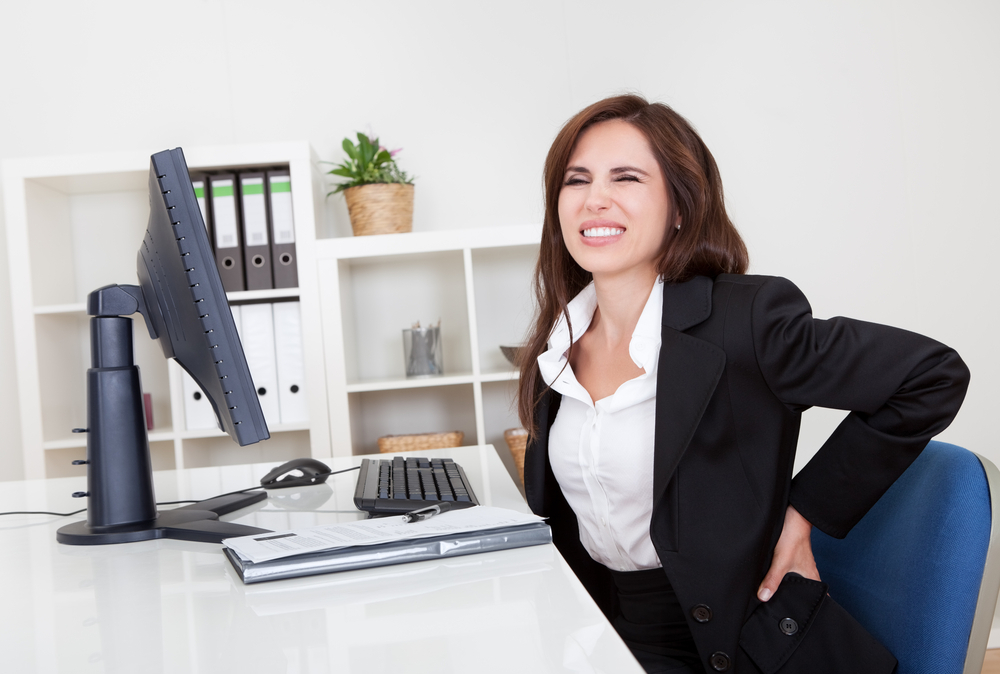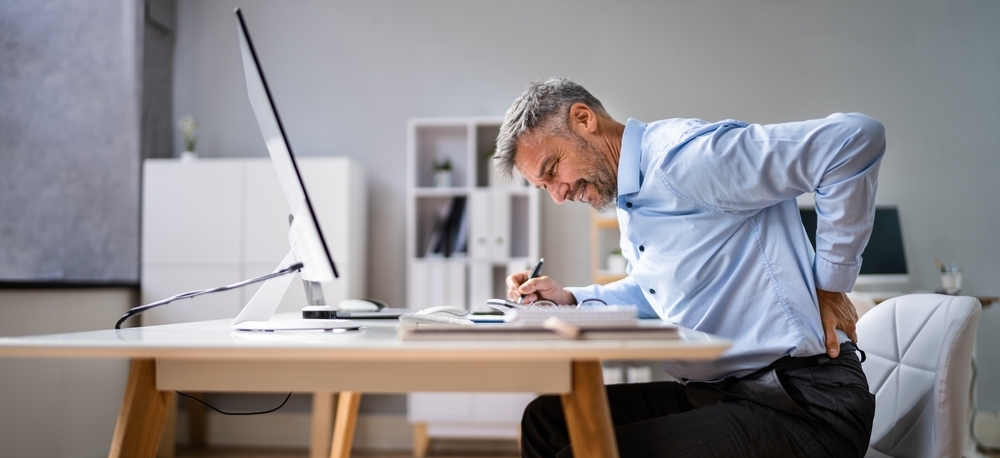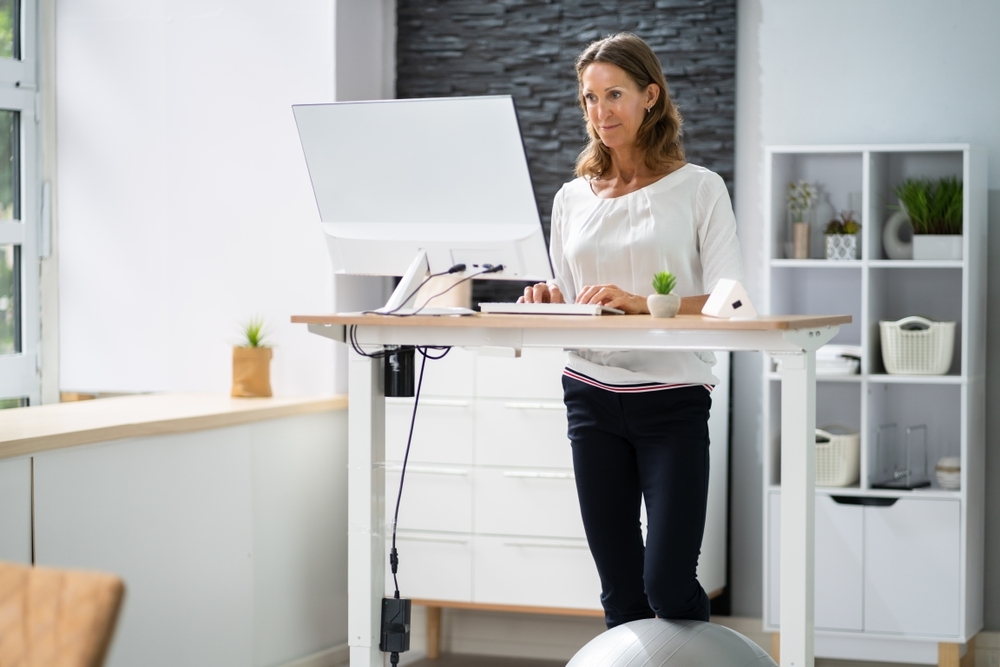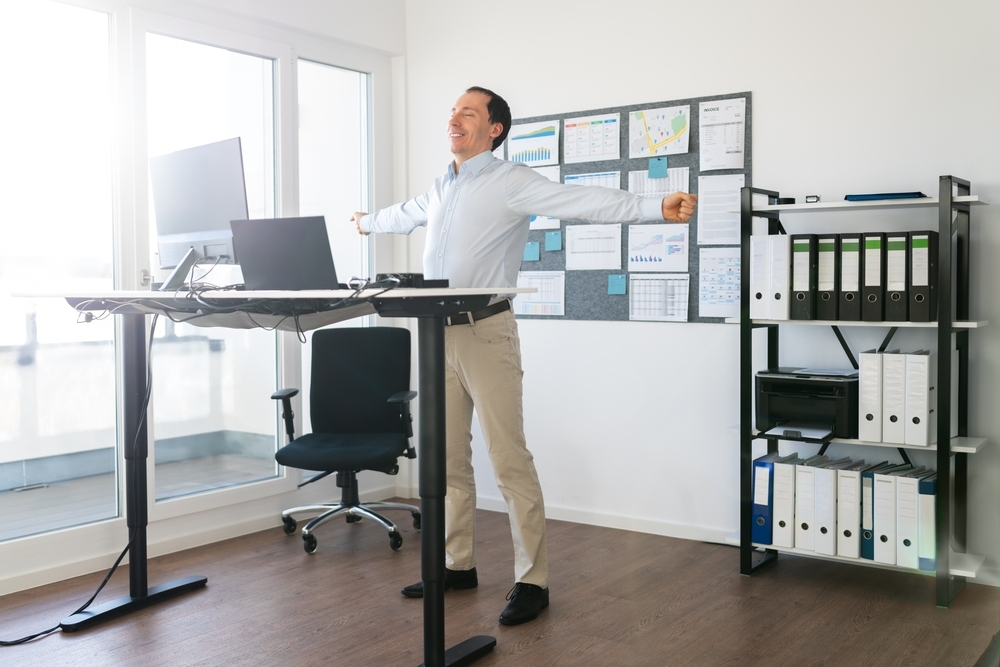The COVID-19 pandemic dramatically changed the nature of office work, with remote work becoming the norm for many businesses. This shift led to a significant rise in demand for standing desks and other ergonomic equipment to accommodate makeshift home offices. However, simply standing all day can also carry health risks. The solution lies in modulation – incorporating both sitting and standing throughout the workday. Transitioning between these postures provides variability, engages different muscle groups, and reduces strain.
This article will explore the mounting research on the health detriments of prolonged sedentary behavior as well as the benefits of alternating between sitting and standing. We’ll provide actionable advice for optimizing your work-from-home setup to reap these benefits. Proper ergonomics education and equipment choices are key; companies like Hiilo specialize in premium standing desks designed for comfort and durability during all-day use. Their range of high-quality electric height-adjustable options allows for effortless position changes on demand.
Regularly alternating between sitting and standing keeps the body active, engaged, and agile while avoiding static postures that can irritate the back, neck, shoulder, and other musculoskeletal issues. Let’s review specific evidence-based benefits, best practices for modulating position, and recommendations for desks and accessories that facilitate ergonomics. The future of healthy remote work requires informed moderation between our chairs and our feet.
The Rise of the Standing Desk
The classic image of office work usually involves someone seated at a desk, hunched over a computer. But this stagnant posture is a modern phenomenon and largely a product of the digital revolution. Historical accounts actually depict clerks and secretaries accustomed to drafting correspondence on their feet. High desks allowed them to stand comfortably while working.
It wasn’t until the proliferation of desktop computers and cubicle workstations in the 1980s and 90s that motionless seated tasks came to dominate the office landscape. Fast forward to today where 82% of the workforce reports sitting for most of their workday. Fortunately, momentum seems to be shifting.
When COVID-19 restrictions triggered a rapid transition to remote work in early 2020, demand for standing desks surged nearly 500%. By the end of that year, over 30% of full-time employees were equipped with standing workstations either through employer provisions or personal purchases. This upward trajectory continues today as experts correlate prolonged sitting with myriad health issues.
Yet consumers seeking out standing desks struggle to distinguish high-quality, ergonomic models from budget imitation brands. Complicated specs, esoteric features like anti-collision technologies, and misleading marketing claims make identification of well-built options an uphill battle.
This frustration sparked Montreal-based startup Hiilo to enter the market. Leveraging over 40 years of hardware design experience, Hiilo thoroughly vets and curates superior electric standing desks to simplify purchase decisions. Their showroom provides transparency around components, performance testing data, and warranties for true peace of mind.
Health Benefits of Standing Desks
The modern workforce spends most waking hours chained to desks and screens, averaging just 4 hours of standing and physical activity per day. Research correlates this chronic inactivity with skyrocketing rates of obesity, diabetes, cardiovascular disease, and even certain cancers. Introducing standing desks aims to reverse these trends from the office up.
Standing requires constant minor muscle contractions and significantly increases calorie expenditure compared to sitting. Just the simple act of getting on one’s feet burns 20% more energy thanks to additional weight-bearing and balance demands. Employees working on their feet for 3-4 hours daily can expect to expend upwards of 1000 extra calories per week! This extra expenditure makes steady progress towards weight loss and fitness goals.
Additionally, standing actively engages the core and lower body while improving posture and strengthening back/leg muscles. Spinal disks receive essential hydration and nourishment thanks to decompression and restored blood flow absent in seated positions. Our heart rates accelerate to 100+ beats per minute which boosts circulation and cardiovascular health over time.
Orthopedic experts confirm that standing desks alleviate spinal compression and strain placed on the shoulders, neck, hips, and knees when sitting for extended periods. By intermittently offloading weight from these sensitive joint complexes, we reduce localized inflammation and accumulated microtrauma. This helps mitigate or even reverse common repetitive overuse injuries.
While no position is optimal for unlimited durations, standing desks provide a healthy alternative that research and medical consensus support.
Dr. Levine at the Mayo Clinic states “There’s more benefits to standing than sitting. Standing introduces physical activity and movement into the work environment.” Don’t just sit there – stand up for your health!
The Importance of Alternating Between Sitting and Standing
While the benefits of standing desks are clear, remaining on one’s feet all day introduces another set of physical stressors. Standing static for prolonged periods can lead to back, hip, and foot pain from constant load-bearing. And permanent upright postures keep the body locked in extension, overworking certain muscle groups. Just like excessive sitting, singular standing fails to provide the dynamic variability needed to nourish the structures and systems of human movement. The solution lies in modulation – regularly transitioning between sitting and standing throughout the day.
The optimal balance involves maintaining a posture for 20 to 30-minute intervals before changing positions. This timeframe allows the musculoskeletal system to reset without overexerting any one stance. Shifting between sitting and standing additionally engages a wider variety of muscle groups and enhances calorie expenditure more than either alone. These micro-movements also boost focus and engagement compared to remaining sedentary.
To fully capitalize on these benefits, the most ergonomic workstations utilize height-adjustable desks rather than fixed-standing setups. Electric motors enable smooth raising and lowering to alternate postures precisely when needed. Other dynamic options include stationary bikes and treadmill desks that allow users to walk or pedal at slow speeds while working. The key is to avoid extremes and counter the demands of any singular posture through balanced variety.
Effective posture transitions begin with quality equipment plus education on ideal ergonomic techniques.
- Users should adjust work surface height to align hands and wrists properly in both sitting and standing positions.
- Breaking up seated tasks every 20-30 minutes can be prompted manually or automated with programmable lifting desks.
- Simply standing briefly with deep breathing exercises while focusing gaze out a window rejuvenates the mind and body before sitting back down.
- Workstation accessories like anti-fatigue mats, supportive shoes, and lumbar cushions maximize comfort in upright postures as well.
Apply these simple alternating strategies toward better health!
Practical Tips for Using Standing Desks
Installing a quality height-adjustable standing desk empowers healthier work routines, but optimizing ergonomics and building movement into new standing routines ensures maximum benefits. The ideal setup positions eyes level with the monitor and wrists floating gently over the keyboard. This typically requires a fully elevated work surface height around 50 inches. While heights vary by user, posture should always remain upright without strained shoulders or a downward tilted neck.
When first transitioning to standing, begin with conservative 20-minute sessions once or twice a day. This avoids overexertion as the body adjusts. Investing in anti-fatigue pads cushions joints and encourages proper movement. Soon standing durations can steadily increase to 45-60 minute blocks, with 5 minute seated breaks after. The average user can expect 3-4 hours of standing broken into these bite-sized periods. Listening to the body and alternating before any strains set in keeps the experience positive.
Beyond static standing, additional movements nourish soft tissues and boost energy further. Periodically rising up onto the toes intensely engages the calves while gently mobilizing the ankles and feet. Gentle side bends open the ribs without over-compressing the lower back. Subtle forward folds with soft knees can alternate with careful back arch extensions to fully decompression the spine between. Simple wrist and shoulder circles lubricate overused upper extremity joints too.
Wearing supportive shoes enables more complex light movements as well. Marching in place activates glutes and hamstrings often dormant when sitting. Controlled lunges and squats similarly engage the lower chain with healthy dynamics. Just be sure to maintain quality alignment; avoid any posture compromising workout attempts. The priority remains proper ergonomics for sustainable gains. Incrementally incorporate a variety of positions and spontaneous movements to start optimizing the stand-up workstation.
Frequently Asked Questions
How often should I switch between sitting and standing?
Experts recommend alternating between sitting and standing every 20-30 minutes throughout the day. This provides enough variation to avoid static postures while allowing the body to fully benefit from each stance. Setting reminders can help establish a healthy modulation cadence.
Are standing desks suitable for everyone?
Most healthy adults can safely use standing desks with proper height adjustments and supportive accessories like anti-fatigue mats. However, those with lower back issues, varicose veins, or other medical conditions should consult a doctor first. Careful building up of standing duration is also essential to allow the body to properly adapt without injury.
Can standing desks help in weight loss?
Yes! Studies show standing burns up to 170 additional calories per hour thanks to increased muscle activation and metabolism compared to sitting. This can translate up to 25 lbs of weight loss per year if incorporated consistently. Optimizing standings desk ergonomics and movements amplifies these benefits further.
What are the signs that I’m standing too much?
Lower back tightness/pain, foot discomfort, neck strain, and generalized fatigue can signal overdoing standing time. Additionally, pay attention to any radiating pain, swelling, or changes in posture like forward head protraction as indications to take a break. Allow the body to recover before cautiously progressing standup durations.
How do I choose the right standing desk for me?
Look for electric height-adjustable desks that allow effortless switching between sitting and standing heights. Prioritize stable bases, smooth lift mechanisms, and ample surface space for proper ergonomic equipment arrangement. Companies like Hiilo thoroughly vet desk components for optimal function and durability. Considering your budget, space, and needs will ensure the best experience.
Invest in Healthy Posture
The modern remote work revolution sparked immense interest in standing desks for healthier work routines. And the decision to install one in a home office carries lasting impacts across posture, weight management, and disease prevention. Yet amidst the surge in options, consumers struggle to identify models actually invested in ergonomic design versus imitations appeasing temporary trends. This underscores the importance of scrutinizing build quality, components, and manufacturer priorities before purchasing.
Consider the desk itself a long-term investment in well-being on par with time-tested fitness equipment or medical exams. Settling for untested products risks undermining the experience and benefits of mixing postures properly. Companies like Hiilo thoroughly vet and recommend only premium electric standing desks designed for sustained daily use. Balancing affordability with rigorous quality standards ensures the perfect fit for any budget and space.
Before relegating yourself to yet another sedentary workday, explore how a standing desk can energize your routine without breaking the bank. Browse our extensive selection, leveraging their unparalleled industry connections and customer-focused support team. Gain peace of mind from 5+ year warranties, free technical guidance, and responsive assistance. Plus fast, reliable shipping means integrating healthy movement into the office quicker than ever before.
The future of work requires proactive posture choices – make it a positive one!
Find the Right Sit-Stand Desk to Maximize Your Health Benefits




